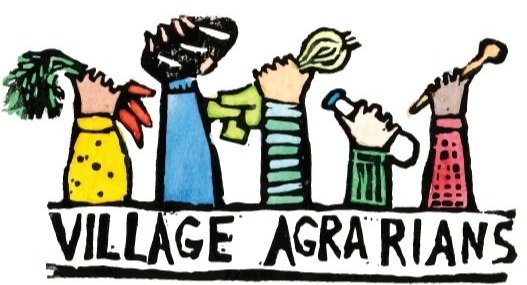Our first member spotlight is Tomtit Farm. The Tomtits, Brit and James, are located in Matangi, Hamilton and they are growing a beautiful array of produce, flowers, and healthy, happy soil! You can find out more about their offerings and how to support their work in their directory listing. They are also part of the Earthworkers programme and have recently been featured on a Farmers in the Field Episode where they talk about no-till techniques and cover cropping. Watch that here!
Tomtit Farm offers their produce through a CSA as well as a 24/7 road side fridge at the Front Paddock Cafe and they even offer delivery! Their CSA offerings include seasonal veges as well as add ons such as fresh baked bread, local eggs, and Last Jar preserves which features Tomtit Farm’s vegetables. It is so great to see the way they are connecting with and supporting other local food business, this is what building local food systems is all about!
Thanks Tomtits for supporting our work here at Village Agrarians, we love what you are doing up north and can’t wait to see what you get up to this season! We are very excited to have you as part of our community!
The Tomtits answered some questions from us about themselves, and shared with us a warming winter recipe featuring cauliflower! Learn more about them below:
How did you get into growing?
Hmmm good question, well I am a massive foodie and love anything that has to do with cooking and eating so I guess growing food is a nice compliment to this passion of mine. The growing journey started from finishing my studies in human nutrition and falling down a rabbit hole of academia where I was hungry for more impact at the community level where the idea of growing organic food came about. I quit my job and started volunteering at community gardens and wwoofing around NZ when the opportunity arose to have a go ourselves in the Waikato a few years ago now.
What's your current favorite plant/fruit/vegetable/flower etc to grow?
There are too many to choose from... coming into spring it would be rude not to mention the happiness dahlias and zinnias bring to our garden. Though this winter I have really enjoyed growing radicchio, the patterns and brightness they bring to the winter garden is amazing.
What do you like most about growing food for your community?
How we can inspire and provide the tools for our community to learn about seasonal produce that grow well for us here in the Waikato, we provide access to a huge variety of produce and exhibit climate mitigation focused growing. The kindness and joy we receive from our customers makes my day and the turn out we get at our community gardening workshops always blows me away.
Do you have offerings besides vegetables that you want to share?
We are just about to start our Spring Seasonal Harvest CSA in September, this is more than vegetables, this is a community between us the farmers, our members who enjoy our produce and the land that we grow the food on. We love offering the chance for our customers to stick with us for a whole season because we really get to know each other really well over this time and can really demonstrate seasonal produce and how it's produced. Our Seasonal Harvest Members become part of the Tomtit Farmily.
We are also growing flowers again this season and are bringing back the Tomtit Farm PYO flowers days.
Do you have a seasonal recipe you can share?
Yes this is one of my absolute winter favourites and it's so easy to whip up.
Whole roasted cauliflower with sesame flat bread, recipe below.
(you can find more amazing recipes from Tomtit Farm on their website)
















